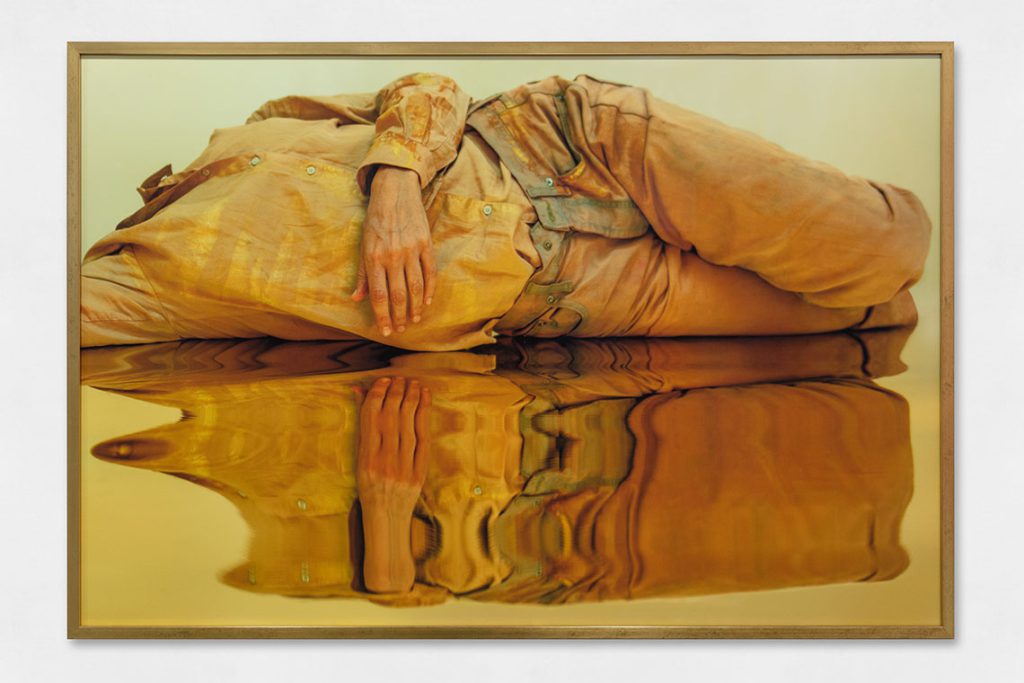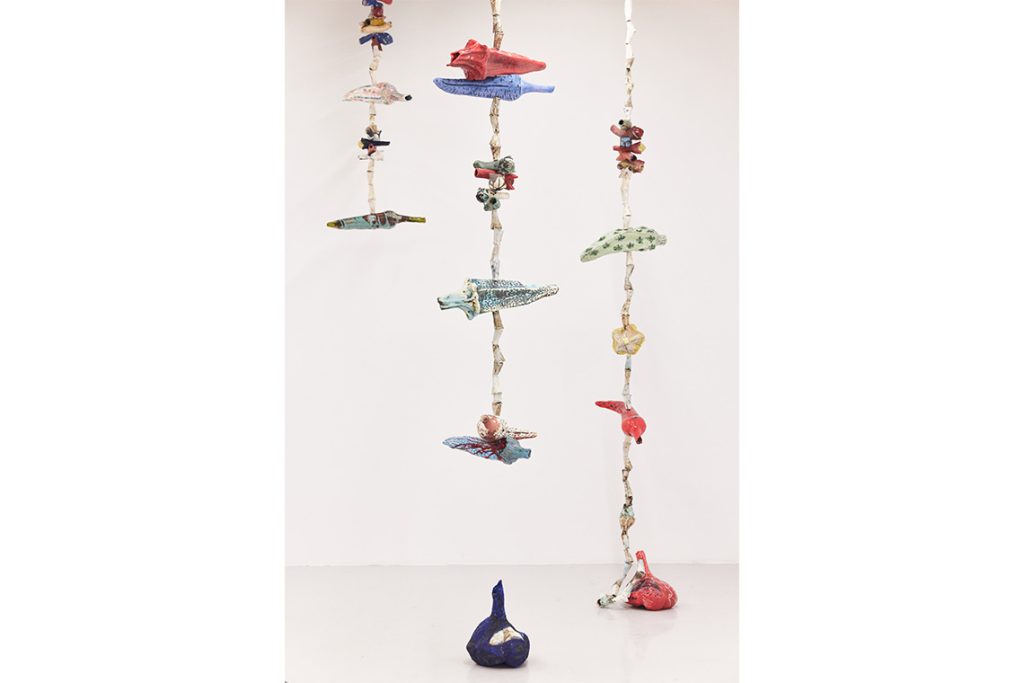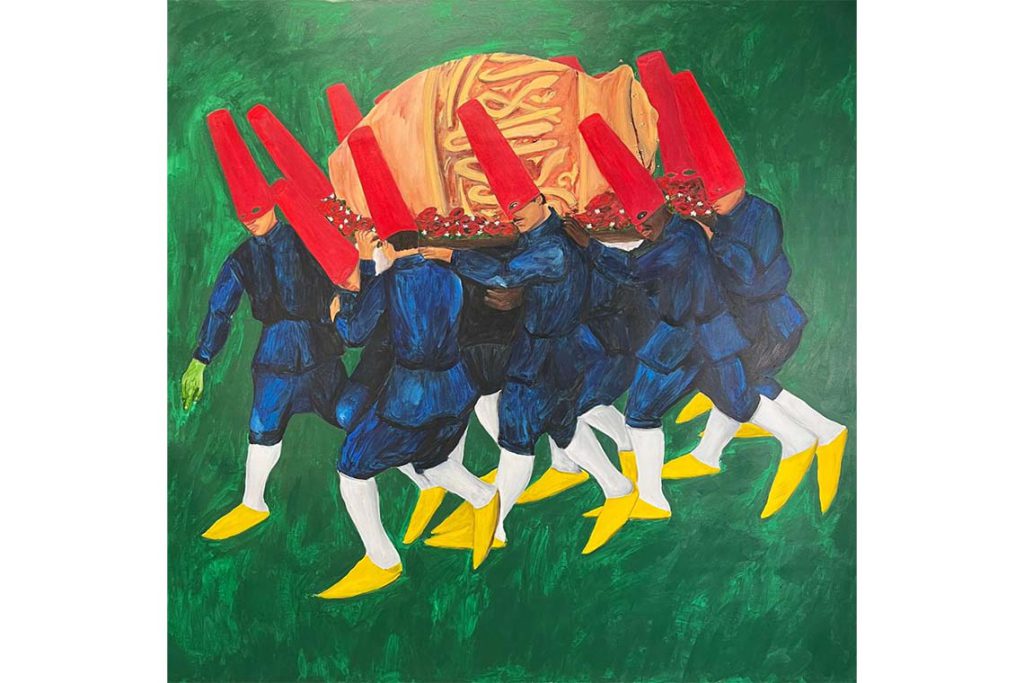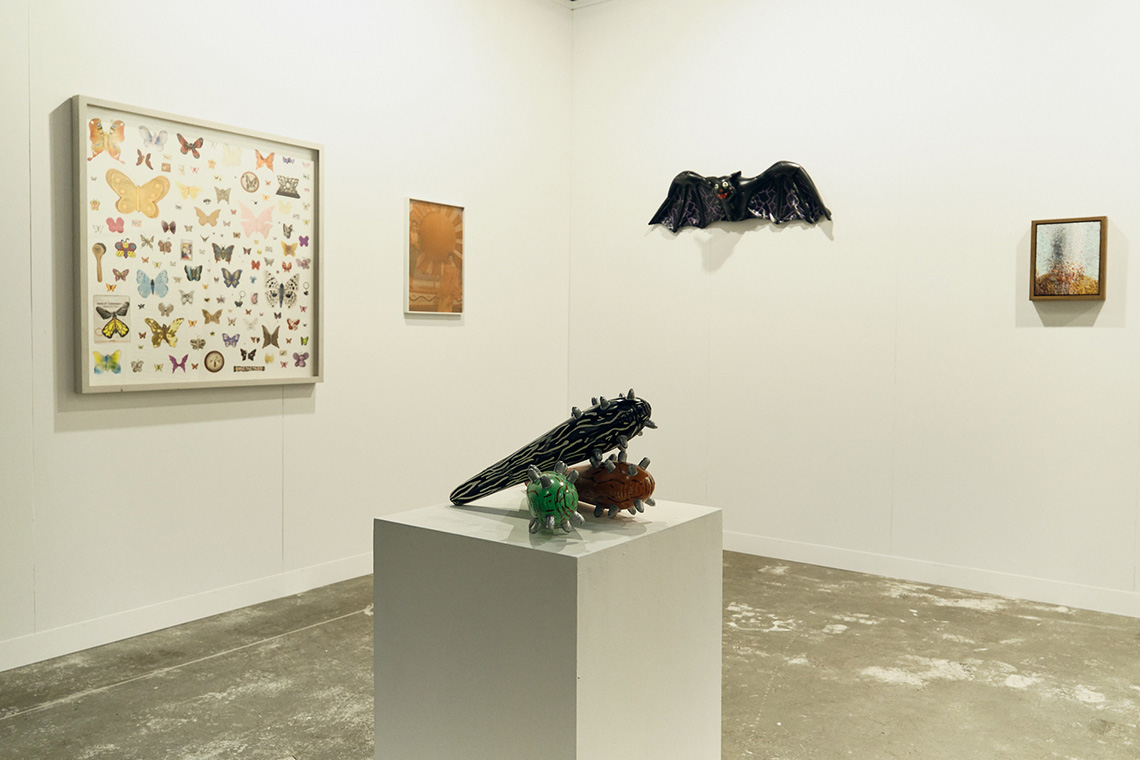The debut of VIMA Art Fair in Limassol marks a pivotal moment for Cyprus, offering a platform that connects artists, galleries, and ideas across the Mediterranean region and beyond.
The inaugural edition of VIMA – Cyprus’s first international contemporary art fair – opened in Limassol on 16 May with an ambitious vision: to root Cyprus firmly on the contemporary art map and reveal the Mediterranean island’s potential as a cultural meeting point between Europe, the Middle East and North Africa. Featuring 27 galleries and more than 100 artists from 20+ countries, VIMA marks a milestone not only for the island’s burgeoning art ecosystem but also for regional collaboration in the visual arts.
Walking through the industrial outskirts of Limassol, encountering an art fair seemed improbable. Yet arriving at the repurposed IT Quarter, set between Limassol’s marina and port, that incongruity quickly gave way to a sense of discovery. The fair unfolds within two exhibition halls alongside a strong curatorial project, an expansive public programme and a series of parallel events that extend well beyond the city to nearby ancient ruins and even to Nicosia. What emerged was not simply an art marketplace, but a cultural proposition: one that foregrounded Cyprus’s unique position at a geographical and symbolic crossroads.
The idea for the fair was born when co-founder Lara Kotreleva, together with Edgar Gadzhiev and Nadezhda Zinovskaya, recognised that “the growing number of galleries and artists who are actively working here and building international connections provides a solid foundation for hosting an art fair on the island.” The founding trio, originally from Russia but now based in Cyprus, envisioned a platform that not only spotlighted Cyprus’s art ecosystem but also bridged broader Mediterranean networks.
Acknowledging their relative outsider status, the founders were quick to engage deeply with the local art community, forming an expert committee composed of established Cypriot cultural figures Alexandros Diogenous, Tasos Stylianou and Andre Zivanari. “We’ve often remarked how fortunate we were to identify and involve such knowledgeable and dedicated experts, despite not initially having a deep understanding of the local context,” Kotreleva said. Their guidance played a pivotal role in ensuring that the fair was both globally minded and rooted in local realities.

Photography by Sebastiano Pellion di Persano. Image courtesy of The Breeder
The fair’s curatorial anchor, The Posterity of the Sun, curated by Paris-based Ludovic Delalande, takes place in a former warehouse complex, the roofless shells of the buildings providing what Ludovic called “a singular space…like an open air museum”. Bringing together 16 artists and a writer from across the Mediterranean, the exhibition stages a reflection on the sun: a universal constant that knows no borders and belongs to everyone and no one, remaining both a shared source of life and an unrelenting force of destruction.
Delalande’s curatorial statement articulates this central tension: “The sun is a given. And yet, as a star, its destruction is inevitable… The Posterity of the Sun unfolds like the memory of a luminous recollection… Beyond this tension, it is also an ode to human resistance. A collective utopia to say and to do together.”
Works are shown amidst the decaying industrial architecture, under the (often bright) Cypriot sun, emphasising themes of transformation and persistence: from Greek artist Panos Profitis’s Demagogue installation(2025), which dissects the mechanisms of political rhetoric, exposing its role in maintaining societal hierarchies; to Majd Abdel Hamid’s reimagining of traditional Palestinian embroidery (Ode to the Sea, 2023-ongoing; Sea Lines, 2025; and Fortune Tellers, 2025), a contemplative practice that carves out space for slowness and repetition, resisting the hyper-mediated conditions of contemporary life; and Honduran Beirut-based Adrian Pepe’s Shroud (2024), which covers one of the post-industrial buildings with hand-felted wool, exploring concepts of destruction, transition and repair.
While VIMA has welcomed galleries from Beirut to Lagos, much of the fair’s strength comes from its local presence. Of the 27 participating galleries, ten are Cypriot – ranging from commercial spaces like Alpha C.K. Art Gallery and The Edit Gallery, to not-for-profits like Korai Project Space and ΓΚΑΡΑΖ (garage). Across local participants, there is a shared sense that Cyprus is in a formative moment, still facing challenges such as limited institutional support and a small collector base, but rich with cultural capital and regional significance, and therefore fertile ground for an art fair like VIMA.

“Presenting in Limassol during Cyprus’s first international contemporary art fair is both deeply rewarding and symbolically significant,” Alpha C.K tells Canvas. “It stands as a powerful validation of Cyprus’s artistic identity… VIMA is accepting a vital role in activating this potential.” For ΓΚΑΡΑΖ, which focuses on research-based exhibitions and Cypriot art history, VIMA represents a chance to catalyse broader and deeper networks. “Cyprus’s strategic location and layered multicultural heritage enable its art scene to act as a vital mediator between Europe, the Middle East, and North Africa,” the gallery explains. “VIMA can help by connecting local galleries with international networks.”
Looking beyond Cyprus, galleries from Greece, Lebanon, the UAE and beyond speak to the fair’s role in stitching together fragmented art worlds from around the Mediterranean. Eleni Riga of Athens’s Callirrhoë gallery, for example, emphasises this role of regional dialogue and connectivity. “Cyprus – and particularly an initiative like VIMA – is a natural and exciting nexus for an international art fair. Geographically and culturally, Cyprus sits at a critical juncture in the Mediterranean,” she notes. “This positioning offers immense potential for building meaningful artistic and cultural bridges across regions that, while diverse, share overlapping narratives, migrations and traditions.”
The Callirrhoë booth features seven artists, whose works, as Riga puts it, “respond directly to the Mediterranean landscape, both real and imagined,” engaging with issues such as environmental fragility and over-tourism and reflecting a goal “to challenge simplified narratives and foster dialogue around the region’s layered realities”. The Breeder, also from Athens, highlighted Cypriot artists like Maria Hassabi and Socrates Socratous, as well as Greek artist Maria Joannou, signalling a commitment to “engaging more deeply with the dynamic art scenes of the Mediterranean”.
For galleries from the Middle East and the broader MENA region, VIMA created a particularly significant and timely regional space of visibility, exchange and possibility. Beirut-based Marfa’, which presented works by Seta Manoukian, Tamara Al Samerraei and Majd Abdel Hamid, saw great value in connecting with neighbours and shaping the regional ecosystem. “Having an art fair in Cyprus can sound at first quite surprising,” says Marfa’s Joumana Asseily, “but the idea is brilliant. It caters to the Mediterranean region and being here is also a way to discover, understand and tie knots with that special creative drive that we all have as neighbours.”

NIKA Project Space (Dubai/Paris), whose presentation included works by Mirna Bamieh, Katya Muromtseva and Adrian Pepe, echoes the sentiment. “Cyprus, situated at the confluence of Europe, the Mediterranean and the MENA regions, offers a rare and compelling locus for cultural exchange,” says founder Veronika Berezina. “We see this as a vital opportunity to contribute to a more expansive, nuanced and interconnected global art discourse.” Nika is joined at VIMA by another Dubai-based gallery, The Third Line, with a selection of artists including Hassan Hajjaj, Slavs & Tatars and Anuar Khalifi.
The idea of neighbourhood-building was reinforced not just through gallery presentations but also via VIMA’s public programme. From Leontios Toumpouris’s autobiographical essay-performance Skipping Time to panel discussions on collecting, foundations and local ecosystems, the fair is making space for dialogue as much as commerce. Events are curated with intention and local anchoring. Take Dream Coat, a performance by Nefeli Papadimouli, which explores ephemeral communities and mythology through sound and costume – casting the act of performance as a metaphor for shared, cross-cultural dreaming.
Although participants such as Asseily are sure that VIMA “will attract collectors, gallerists, cultural practitioners and art lovers from around the (Mediterranean) basin and hopefully worldwide” – a conviction that rings true amid the busy booths and many languages being spoken at the fair – its success in terms of sales and market impact, of course, have yet to be determined.
Sales figures notwithstanding, VIMA’s greatest contribution may be in the cultural framework it has begun to shape. While relatively small, VIMA has positioned itself as a platform for proximity and collaboration, affirming Cyprus as a dynamic node in the Mediterranean’s evolving art landscape. As well as meaning ‘step’, fitting for a landmark moment like a nation’s first-ever international art fair, VIMA’s name (Bήμα) also evokes a ‘platform’ or ‘podium’: a space for visibility, dialogue and cultural exchange. More than a marketplace, VIMA is embracing the often slow, necessary work of building cultural bridges – one step at a time.



